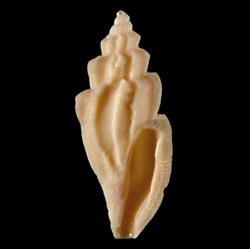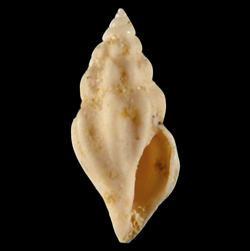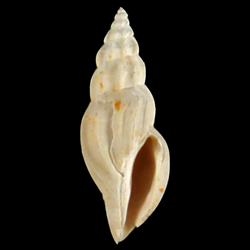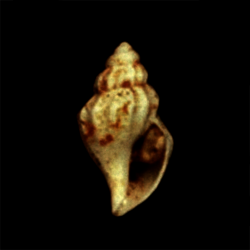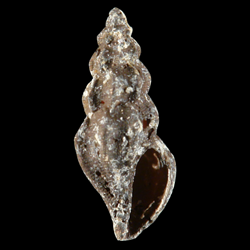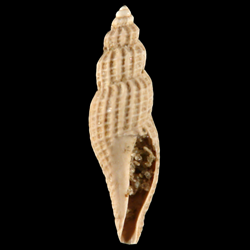
Mangeliidae
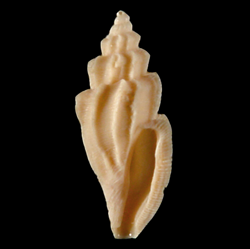
- Phylum: Mollusca
- Class: Gastropoda
- Order: Neogastropoda
- Family: Mangeliidae
Overview
Common name: Mangeliidae is one of several families in the Conoidea often referred to as turrid shells
Key morphological features: The Mangeliidae are small to medium-sized gastropods with medium to high-spired, fusiform shells. Many species have angular whorl shoulders, and the siphonal canal is of medium or short length. Most species have prominent axial and spiral sculpture, the latter often consisting of fine, beaded cords. The anal sinus ranges from shallow to deep and the aperture is unoccluded, but in rare cases teeth are present. Protoconch in most species is multispiral (up to 5 whorls), but is paucispiral in some species. Source: Bouchet et al. (2011)
Geological range: Paleogene to Recent (iDigBio).
Geographic distribution: A distributional map for modern Mangeliidae may be accessed from OBIS. A distributional map for ancient Mangeliidae may be accessed from iDigBio.
Diversity: There are 730 recognized living species of Mangeliidae and 65 genera (WoRMS database, unvetted). The Mangeliidae are not represented in the Paleobiology Database, probably because this family was described relatively recently as part of the updated genus-level classification of superfamily Conoidea by Bouchet et al. (2011). A potentially more accurate representation of this gastropod family’s fossil record can be found on iDigBio.
Paleoecology: Little has been documented about Mangeliidae ecology, but like all members of the superfamily Conoidea, they are predatory marine gastropods. As with the famous genus Conus, many turrids use potent venoms to subdue their prey and are of interest in pharmacological research. They are found in intertidal to deep water habitats at tropical to polar latitudes worldwide. Sources: Kantor and Puillandre (2012); Puillandre et al. (2011); OBIS
Phylogenetic status: Monophyletic. The molecular phylogenetic analysis of Puillandre et al. (2011) supports the monophyly of Family Mangeliidae.
